Leaving Dungarpur on a surprisingly empty bus was a slightly melancholic experience. I had really enjoyed my time there, not only at the palace but also in the old town and with the people and the wildlife. I had really wanted to stay on, but my budget was screaming so onwards I must go. My next destination was Ranakpur, nestled in the Aravelli Hill ranges north of Udaipur. My journey there involved a bus change at the government bus station. This was again hassle free, apart the searing heat. As we departed Udaipur, I was interested to notice (in my glass cabinet next to the driver) that this particular driver, despite his age, never used the horn. I questioned this unique behaviour, when 10 minutes into the journey he ploughed into a new ford car on a major intersection. Whilst the aging bus was virtually untouched, the ford was heavily damaged and the driver was irate. Police got involved and temperatures escalated both inside and outside the bus. Eventually as the traffic around us ground to a halt, the police appeared to calm the situation and we continued. It was then I realized how important the horn is in India, as its the way of telling a vehicle of your presence (few trucks use their wing mirrors and have “please use horn” written on their rears). Then, obviously it dawned on me how dangerous driving without a horn is...
As we left the rubble and rubbish of new town Udaipur, we climbed into the Aravelli Hills
. The scenery suddenly became quite beautiful in the rolling hills with rocky outcrops, green valleys (due to the volume of rain during the monsoons), beautiful trees and plenty of Indian village life. The windy road became one lane, full of livestock, villagers and shared taxi jeeps. Occasionally we would enter a market town and more people would clamber on the bus. Traders, families, school children and pilgrims. Some were fantastically dressed and I began to notice more and more men wearing turbans and jewelry, especially a sort of long golden earring.
Later, I must have fallen asleep as, the next thing I remember was arriving at the Adinatha temple. This is the second largest Jain temple in Rajasthan, which was about 4 km north of Ranakpur. I had decided to stay outside Ranakpur and managed to find an “eco resort in the mountains” offering a 30% off season discount. However I must have missed the entrance when I had dosed off, so I got off the bus at the temple with my gear, and tried to phone the Aranywas Hotel
. It turned out that they were a further 7 kms back up the mountain, so I asked them to organise a Taxi for me, which they told me would take 45 mins as they were in the middle of nowhere and the taxi would have to come from somewhere else.
I decided to look at the temple (which I wanted to visit anyway) while I was there. I had to change clothes as I was unsuitably dressed and store my large bags which the friendly security guards allowed me to do at the entrance gate and walked to the temple. Jainism is a branch of Hinduism started in the 6th Century but with a specific focus on the environment, pacifism and respect of all life. This giant temple, built in 15th century was beautiful, with 1444 engraved pillars crammed into this dramatic structure symmetrically designed around a central giant shrine. Small shrines branched off the centre and the monks/priests inside were friendly and helpful. It was unquestionably the most dramatic and delicately craved temple I had so far visited in Rajasthan and was fascinating
.
The taxi duly arrived and we climbed up the mountainside road, past swarms of Langur monkeys in the trees (unfortunately over weight and fed by the tourists) to the Aranywas. It turned out I was the only guest again. “You are the Maharaja” said Didi, the manager. It seems I am always a Maharaja, I replied. Aranywas was idilic, far better than what I expected. Perched on a low mountain top, it was silent, quiet and serene. A central restaurant and reading room was surrounded by gardens and 22 stone cottages, each ensuite with a balcony over looking the forest. There was a swimming pool at the side of the hilltop with panoramic views and little massage and spa rooms lined around the outside.
The first day I just relaxed and watched the birds, which unfortunately were no where near as prolific as in Dungarpur, but interesting nevertheless
. The white throated Kingfisher was there in abundance, but access to the pond at the foot of the hill was difficult due to monsoon damage, so that was unfortunate. However there was a lot of Kites, beautiful large Magpies and small birds in and around the garden. The tranquility was priceless.
After lounging by the pool and relaxing Didi took me on a hill trek, to visit the local tribes and see how they lived. We visited a small village on the hill tops surrounding the resort. These villages had about six houses some of which accommodated up to four related families. All had dirt floors, electricity provided by the government, usually one bed, several children and and young wife, yet they were all friendly and accommodating. I was shown where the animals lived, flour grounding, water transportation (on women’s heads) and the rudimentary kitchens (all just several bricks for a wood powered stove (or BBQ as we would call it)
.
In the fields, village irrigation was explained as was peanut, coriander, corn, potato and chili farming. In the fields were the rest of the women, the men watched over the livestock, and the children immediately returned to the fields to work after school. Life seemed hard but again everyone was friendly and smiled.
Back at the Aranywas, the owner’s had dog ventured into the local village below the lodge and got into a fight with the feral dogs there. India is full of feral dogs roaming as packs around villages and cities. A labrador, his cheek was bitten off, and he had lost an eye and several teeth. He seemed in pain and distressed, I found the owner who said that it was impossible to take him to a vet. “Then you should shoot him,” I countered and “put him out of his pain.” “No, he will be OK,” was the reply. It later turned out he was a Jain follower and cannot kill an animal. Its was a shame that the labrador had to suffer.
My other trip was to Kumbhalgarh to see the famous immense fort there. Didi organised a driver, chatty, very touchy feely (somewhat weird), but OK nevertheless. Kumbhalgarh Fort was second most important after Chittaurgarh to the Mewar Kingdom. The temples and the walls form a 36 km circuit, all visible from the highest point of the main palace together with spectacular views of the Aravelli mountains and the plains towards Jodhpur
. As well as a the palace it includes a huge temple complex, a large town, villages, fields and huge defensive walls 6 calvary wide, allowing substantial patrols.
It was a great peaceful location at eight o'clock. I went early to miss the heat and the tourists, and I spent several hours around the around the entrance, climbing the palace, walking the walls and looking at the temples. But a saw just a fraction of the place. As the heat intensified, we drove back to Ranakpur through the mountain villages, viewing work in the fields, children going to school and daily village life. In one village there were a gathering of men visiting a temple, dressed in those traditional jewelries I had seen from the bus, so I stopped to take photos.
It was a a shame to leave the peace and tranquility of the Aranywas, but I had arranged a home stay south of Jodhpur with the Prajapat family in the village of Salawas. I waited for a bus at the main junction near the Aranywas, but the manager had found an Indian couple travelling to Jodhpur by taxi and managed to persuaded them to give me a lift. So I left in luxury and arrived relaxed.
Ranakpur itself was a leafy gum tree lined street village with hotels lining the main road and lots of dust. Leaving the Aravelli Hills behind, we drove through the semi arid desert to Jodhpur. It was flat, with Acacia bushes and little rivers. Sometimes we passed small towns, industrial sites and large truck stops.
I was dropped off at a dusty dirty truck stop next to Rajasthan’s main oil refinery. There I was meet by a jovial Mr Chhotaram Prajapat in his jeep. He was a little older than me dressed in a traditional trousers made from a sheet of cotton, handmade multi-coloured leather pointed shoes, a red bull t-shirt and a huge handlebar moustache.
He talked fast at me and his English (self taught) was inflected by a thick Indian accent. I understood very little, which mattered little as his laugh and smile was so infectious. He drove his open sided jeep about ten kilometers to the dusty village of Salawas. His house was beautiful, quiet and spotless. I met his wife, Mrs Prajapat, who carried my backpack on her head into my mud house and then gave me a Hindu red dot on my forehead with a piece of rice also stuck on, for good luck.
My mud house was built by himself and his two eldest sons Chhotaram Jn (27) and Shambhuram (22) using the traditional materials of cow dung (“repels the mosquitos”) and plant thatching. Mine was ensuite and extremely comfortable with a fan. In the main house they had a sort of dirt floor courtyard, surrounded by the main house with two rooms that I saw, one for the son’s computers and a fridge. The other was for the carpets they and the villagers made, as the Prajapat family were traditionally weavers and attracted many visitors, they also sold other carpets made by other families on their behalf.
All the family slept outside in the courtyard on large wooden beds, made by CP. On one side of the courtyard were two small buildings, one was the kitchen, same as the ones I had seen in the Aravelli Hills, with a store for the buffalo milk at one end and a buffalo curd maker. In the smaller room were the traditional large red pottery vases for keeping drinking water and the cooking utensils.
Over looking the courtyard was a huge “tree of life” and then a small building underneath the tree housed a big weaving loom. My mud hut was at the side of the house, one of six on the property, the rest located at the back, behind Tiger et al. Tiger was one of the three buffalo. Tiger was eight months old, energetic and enjoyed throwing his weight around, when not tied up. The two adults were milked every morning and the milk distributed to family and neighbours who called in everyday between 5.30 and 7.00am for it.
This visit was to be a fantastic experience, ranging from the cooking courses given by Mrs Prajapat (especially Chapatis & Sogra- Millet Chapatis), to vegetable preparation - Ker Sangri (we ate a lot of Gum, a vegetable sourced from trees, which was dried or served fresh, sometimes even fried - looking like a miniature runner bean), fresh Curd, many chili dishes. All vegetarian, no eggs, no alcohol, no cow products.
Chhotaram Jn, I especially liked. He was an engaging man with the personality of his father. Gregarious, outgoing, always happy, he took me on a several excursions. We went off to visit the local Bishnoi tribe, bird and animal watching, visiting some families who made traditional handicrafts. One local Muslim family, made all the local red stone pottery from a manually powered potters wheel. This was made from rock, turned by hand with a big stick and spun ingeniously on a wooden block. I also saw some bed covers designed in maharaja colours, and some using old cummerbunds with the Maharaja colours of places like Udaipur and Dungarpur.
The birdlife was also great. White Necked Storks, Skimmers, Indian Rollers, Bee-eaters etc etc. The fabulous Black Bull Antelope lets us approach to quiet a close distance. The Bishnoi people we visited are an interesting caste that follow a 17th century guru and believe that cutting down trees and killing or harming animals are terrible sins. They have thus preserved large sections of the land in Western Rajasthan with these environmental polices and provided fantastic nature reserves in a region desperate crying out for this. Chhotaram Jn took me to a Bishnoi temple and a famous orchard where 330 followers sacrificed their lives protecting trees in the 18th century.
I also visited a Bishnoi house to see their Opium Tea Ceremony (they still use Opium in the religious tea ceremonies), turban tying, camel wool weaving and preparation. I also visited the huge majestic Jodhpur Fort, Meherangarh, with its towering views of the blue city of Jodhpur, plus the rubbish littered dirty public Mandore Gardens in Jodhpur and the famous Jodhpur clock tower with CP senior. I still could not understand much of what he said, however when he discovered I had an interest in Rajasthani street food, we further bonded. He showed me, in the centre of Salawas his favourite street seller, on a ramshackle cart making ‘Aloe Tikka’ (potato, beans cilli and onions in tumeric and cilli), ‘Chili Pakorat’ (deep fried dal with green chili - a sort of adult tasty healthy nugget), ‘Pani Puri’ was like a small pastry ball filled with a vinegar/spice sauce and a piece of potato and ‘Kachori’ sort of a cross between a vegetable samosa with less pastry and a round pasty. All these were delicious and about 10-20p a helping. Also every stall has a different way of making these dishes so they have a delightful variability from cart to cart. Always best to get a local recommendation or choose the one with the longest queue as this was the best way of avoiding further doses of the Delhi belly
CP Senior also took me to Osian, a desert town famous for its temples. One Hindu and one large Jain. the Jain was very interesting the smaller Hindu one less so, but the small hill top town of Osian was fascinating, with small narrow streets, blue buildings, loads of wandering bulls and many spice shops. The sand dunes outside town were also worth a visit. We also entertained ourselves with roasted corn on the cob with chili or lemon and lemon & masala soda drinks. All diabetic friendly.
In the evening CP Senior would walk me around Salawas, introduce me to locals and go for Chai in some neighbours’ houses. Sometimes his daughters would visit with his grandchildren in the evening and sometimes other tourists would drop in with the sons on other tours for lunch or to see the carpet weaving. At 2 o’clock in the afternoon the two younger sons returned from school and we had a big lunch together, sitting cross legged on the floor carpets and we all ate with our right hands.
It was such a great experience, its hard to convey how much I enjoyed my time with the Prajapat family. Again it was a huge shame to leave and one day I hope to see them again. It will hard to forget Mr Chhotaram Prajapat Senior’s smile under that huge moustache.
Big Moustaches, Street Food & Big Forts
Friday, September 20, 2013
 Salawas, Rajasthan, India
Salawas, Rajasthan, India
Other Entries
-
2The Final Week
Jun 2983 days prior London, United Kingdomphoto_camera2videocam 0comment 0
London, United Kingdomphoto_camera2videocam 0comment 0 -
3Indian Visa Chaos and Arrival in Colombo
Jul 0775 days prior Colombo, Sri Lankaphoto_camera1videocam 0comment 6
Colombo, Sri Lankaphoto_camera1videocam 0comment 6 -
4Colombo, City of Curries and Cricket
Jul 1072 days prior Colombo, Sri Lankaphoto_camera3videocam 0comment 0
Colombo, Sri Lankaphoto_camera3videocam 0comment 0 -
5The Sri Lanka cloud forest.
Jul 1369 days prior Nuwara Eliya, Sri Lankaphoto_camera2videocam 0comment 3
Nuwara Eliya, Sri Lankaphoto_camera2videocam 0comment 3 -
6A Traditional Plantation House
Jul 2062 days prior Galagedera, Sri Lankaphoto_camera2videocam 0comment 1
Galagedera, Sri Lankaphoto_camera2videocam 0comment 1 -
7Baby Elephants, water & mud!
Jul 2458 days prior Giritale, Sri Lankaphoto_camera4videocam 0comment 6
Giritale, Sri Lankaphoto_camera4videocam 0comment 6 -
8Traffic Jams and Great Birdlife in National Parks
Jul 2557 days prior Tissamaharama, Sri Lankaphoto_camera4videocam 0comment 0
Tissamaharama, Sri Lankaphoto_camera4videocam 0comment 0 -
9Dinner Parties, Train Sets & Stilt Fisherman
Aug 0150 days prior Galle, Sri Lankaphoto_camera5videocam 0comment 1
Galle, Sri Lankaphoto_camera5videocam 0comment 1 -
10Negombo & Bangkok & Prickly Heat
Aug 0447 days prior Bangkok, Thailandphoto_camera3videocam 0comment 2
Bangkok, Thailandphoto_camera3videocam 0comment 2 -
11Phnom Penh, Palaces, Genocide & Pajamas
Aug 0942 days prior Phnom Penh, Cambodiaphoto_camera4videocam 0comment 2
Phnom Penh, Cambodiaphoto_camera4videocam 0comment 2 -
12More Elephants, Hoeing & Hello Kitty
Aug 1635 days prior Sen Monorom, Cambodiaphoto_camera3videocam 0comment 1
Sen Monorom, Cambodiaphoto_camera3videocam 0comment 1 -
13Prasat Preah Vihear, Soldiers & A Bordello
Aug 1833 days prior Preah Vihear, Cambodiaphoto_camera4videocam 0comment 0
Preah Vihear, Cambodiaphoto_camera4videocam 0comment 0 -
14Angkor Wat, orphans & getting wet.
Aug 2427 days prior Siem Reap, Cambodiaphoto_camera3videocam 0comment 0
Siem Reap, Cambodiaphoto_camera3videocam 0comment 0 -
15Tata, Trains, Taxis and Rickshaws. Chaos & Theft
Aug 3120 days prior Kolkata (Calcutta), Indiaphoto_camera6videocam 0comment 0
Kolkata (Calcutta), Indiaphoto_camera6videocam 0comment 0 -
16The Pink/Orange City, Masala Tea, Amber Fort
Sep 0812 days prior Jaipur, Indiaphoto_camera4videocam 0comment 1
Jaipur, Indiaphoto_camera4videocam 0comment 1 -
17Bundi, Dust, Forts and the real Rajasthan
Sep 128 days prior Bundi, Indiaphoto_camera5videocam 0comment 0
Bundi, Indiaphoto_camera5videocam 0comment 0 -
18Maharajas, Lakes, Vintage Cars and Birds
Sep 155 days prior Udaipur, Indiaphoto_camera5videocam 0comment 0
Udaipur, Indiaphoto_camera5videocam 0comment 0 -
19Big Moustaches, Street Food & Big Forts
Sep 20 Salawas, Indiaphoto_camera6videocam 0comment 0
Salawas, Indiaphoto_camera6videocam 0comment 0 -
20Psychotic Cows, Nagas, Omar Sherif & Desert Forts
Sep 266 days later Jaisalmer, Indiaphoto_camera4videocam 0comment 0
Jaisalmer, Indiaphoto_camera4videocam 0comment 0 -
21Special Blog: Seva Ram & Jitu Solanki
Oct 0111 days later Bikaner, Indiaphoto_camera5videocam 0comment 0
Bikaner, Indiaphoto_camera5videocam 0comment 0 -
22Public Speaking, Painted Havelis and lots of rats!
Oct 0414 days later Mandawa, Indiaphoto_camera8videocam 0comment 0
Mandawa, Indiaphoto_camera8videocam 0comment 0 -
23National Parks, Road Rage, Drunks & a Tiger!
Oct 1222 days later Bharatpur, Indiaphoto_camera4videocam 0comment 2
Bharatpur, Indiaphoto_camera4videocam 0comment 2 -
24Mosques, Cremations, Festivals & Dhal
Oct 2131 days later Varanasi, Indiaphoto_camera7videocam 0comment 0
Varanasi, Indiaphoto_camera7videocam 0comment 0 -
25Nepal, trekking, Cold, Everest and Gurkas
Oct 2838 days later Kayakatta, Nepalphoto_camera4videocam 0comment 0
Kayakatta, Nepalphoto_camera4videocam 0comment 0 -
26Karmi Farm, Sherpa Tenzing, Mr Happy and Momos
Nov 0546 days later Darjeeling, Indiaphoto_camera4videocam 0comment 0
Darjeeling, Indiaphoto_camera4videocam 0comment 0 -
27Rhinos, Armed Guards & Posing For Photos
Nov 1455 days later Kaziranga National Park, Indiaphoto_camera5videocam 0comment 0
Kaziranga National Park, Indiaphoto_camera5videocam 0comment 0 -
28Spiders, The Kharsi, Archery and Bad Driving
Nov 2061 days later Cherrapunji, Indiaphoto_camera5videocam 0comment 0
Cherrapunji, Indiaphoto_camera5videocam 0comment 0 -
29Monpas, Sumo, Yak Butter Tea & Indian Army
Nov 2465 days later Tawang, Indiaphoto_camera7videocam 0comment 0
Tawang, Indiaphoto_camera7videocam 0comment 0 -
30Uncles, Nuns, Bridges, Red Rice and Gompas
Nov 2768 days later Sakti, Indiaphoto_camera5videocam 0comment 0
Sakti, Indiaphoto_camera5videocam 0comment 0 -
31Buddhist Festival, Feral Dogs, Exploding Cakes
Dec 0172 days later Bomdila, Indiaphoto_camera6videocam 0comment 0
Bomdila, Indiaphoto_camera6videocam 0comment 0 -
32A Horror Journey
Dec 0374 days later Tezpur, Indiaphoto_camera4videocam 0comment 0
Tezpur, Indiaphoto_camera4videocam 0comment 0 -
33Hornbill Festival, Nagas & Nagaland
Dec 1081 days later Kohima, Indiaphoto_camera6videocam 0comment 3
Kohima, Indiaphoto_camera6videocam 0comment 3 -
34Pied Pipers, Hard Beds, Ao and Chang tribes
Dec 1889 days later Mokokchung, Indiaphoto_camera7videocam 0comment 0
Mokokchung, Indiaphoto_camera7videocam 0comment 0 -
35Battles, Monoliths, Street Photography, Home
Jan 01103 days later Dubai, United Arab Emiratesphoto_camera6videocam 0comment 0
Dubai, United Arab Emiratesphoto_camera6videocam 0comment 0 -
36Athens, Bristol, Doctors and Rain - lots of rain
Jan 15117 days later Athens, Greecephoto_camera2videocam 0comment 0
Athens, Greecephoto_camera2videocam 0comment 0 -
37Addis, Bus Travel, Malibu Storks and Lake Storms.
Feb 01134 days later Addis Ababa, Ethiopiaphoto_camera4videocam 0comment 0
Addis Ababa, Ethiopiaphoto_camera4videocam 0comment 0

 Salawas, Rajasthan, India
Salawas, Rajasthan, India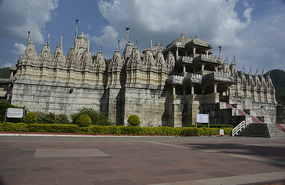
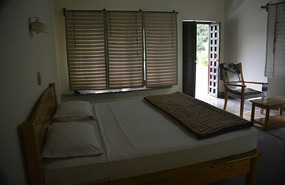
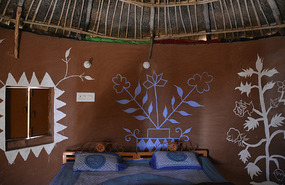

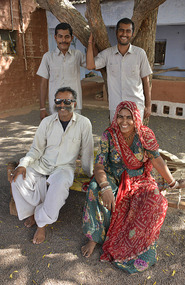
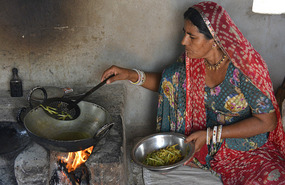









2025-05-22